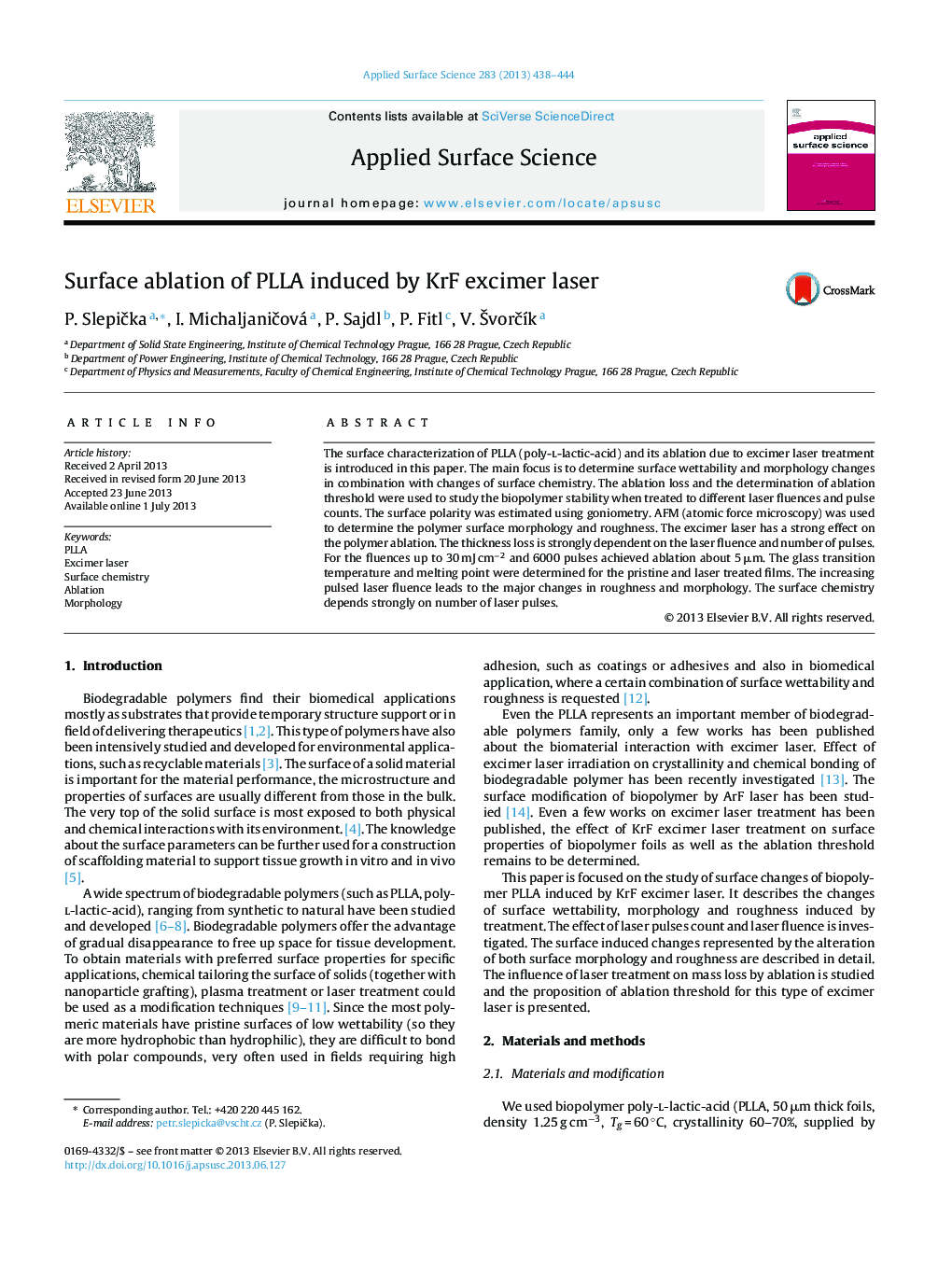| Article ID | Journal | Published Year | Pages | File Type |
|---|---|---|---|---|
| 5353928 | Applied Surface Science | 2013 | 7 Pages |
Abstract
The surface characterization of PLLA (poly-l-lactic-acid) and its ablation due to excimer laser treatment is introduced in this paper. The main focus is to determine surface wettability and morphology changes in combination with changes of surface chemistry. The ablation loss and the determination of ablation threshold were used to study the biopolymer stability when treated to different laser fluences and pulse counts. The surface polarity was estimated using goniometry. AFM (atomic force microscopy) was used to determine the polymer surface morphology and roughness. The excimer laser has a strong effect on the polymer ablation. The thickness loss is strongly dependent on the laser fluence and number of pulses. For the fluences up to 30 mJ cmâ2 and 6000 pulses achieved ablation about 5 μm. The glass transition temperature and melting point were determined for the pristine and laser treated films. The increasing pulsed laser fluence leads to the major changes in roughness and morphology. The surface chemistry depends strongly on number of laser pulses.
Related Topics
Physical Sciences and Engineering
Chemistry
Physical and Theoretical Chemistry
Authors
P. SlepiÄka, I. MichaljaniÄová, P. Sajdl, P. Fitl, V. Å vorÄÃk,
